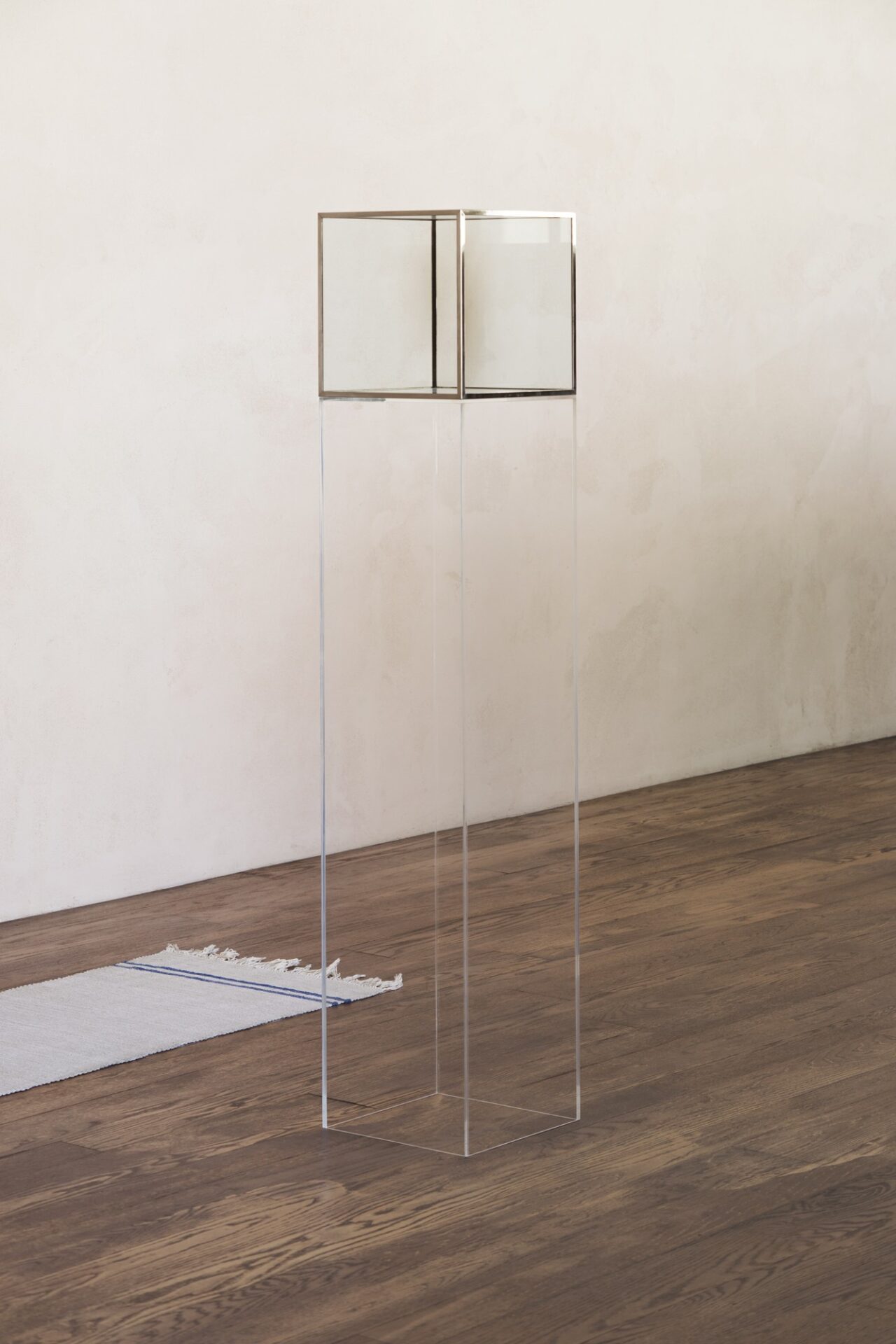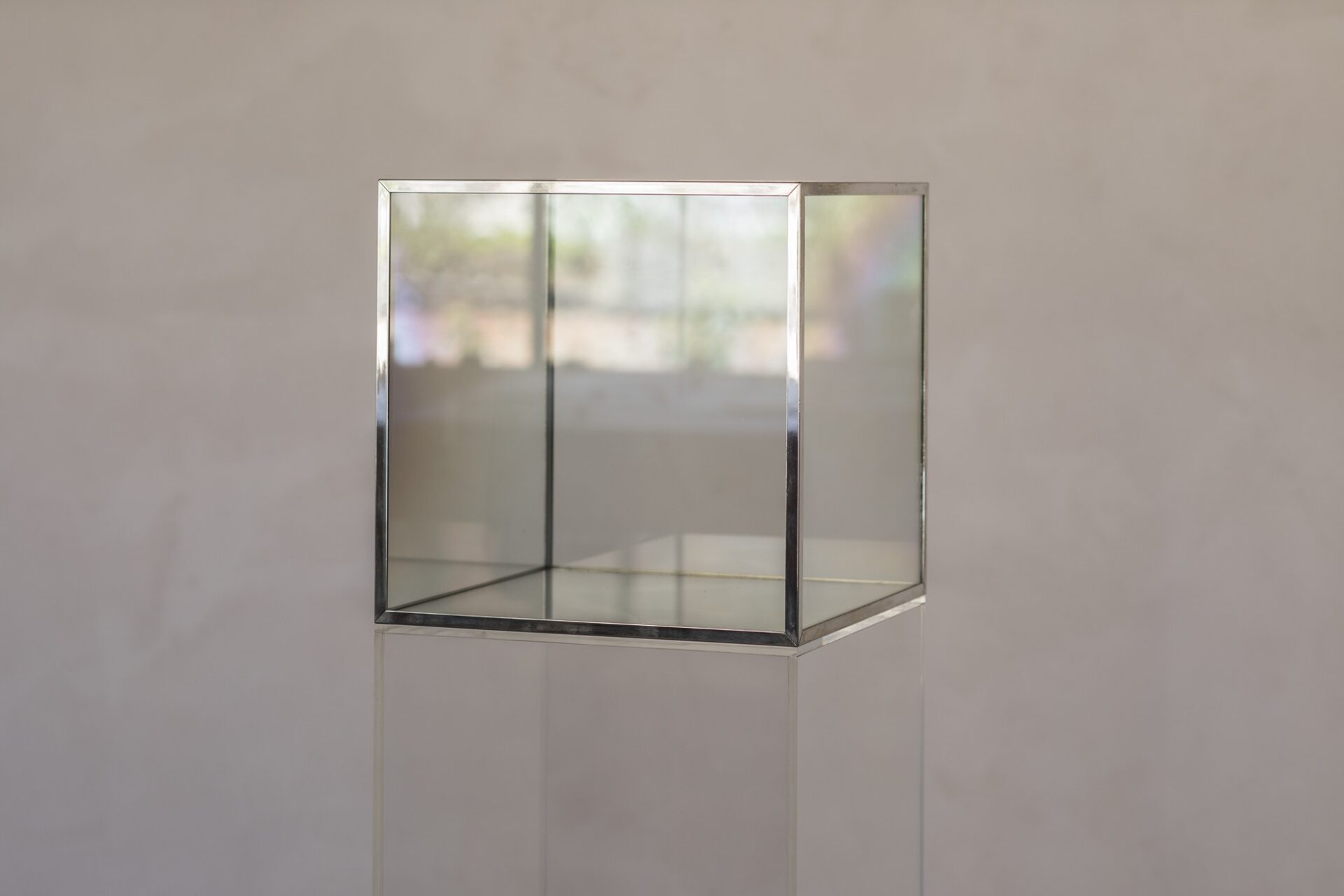Larry Bell was born in Chicago and grew up in Los Angeles. After graduating from the Chouinard Art Institute in 1959, he began working at a frame shop in the San Fernando Valley, where he would “experiment with scraps of glass while at the shop, making small constructions with the material and other framing supplies.”1 This period marked a shift in Bell’s career away from painting toward three-dimensional works in light and glass.
Bell moved to New York in 1965, at which point he met Donald Judd and Frank Stella, who would remain his lifelong friends and supporters; he then returned to Los Angeles in 1967. Judd wrote of Bell’s work in 1983, “At the same time as Pollock and since, almost all first-rate art has been based on an immediate phenomenon, for example, the work of Dan Flavin and Larry Bell. The necessity for this kind of immediacy is one reason three-dimensional art has been the most advanced for twenty years.”2
Bell has frequently stated that coated glass has three significant properties for his work: it transmits, absorbs, and reflects light. Bell made his first cubes out of household mirrors; later, he had a large vacuum chamber built to his specifications and learned how to custom coat the glass himself. The “nacreous” glass surfaces of the cube, glazed with an infinitesimally thin layer of metallic and nonmetallic elements, visibly reflect each other and the surrounding space.3
In addition to this work in glass, Donald Judd installed a large painting of Bell’s from 1962, Lux at the Merritt Jones, in his Architecture Studio.

